Discover the Serenity of Wanbu Huayanjing Pagoda: A Hidden Gem
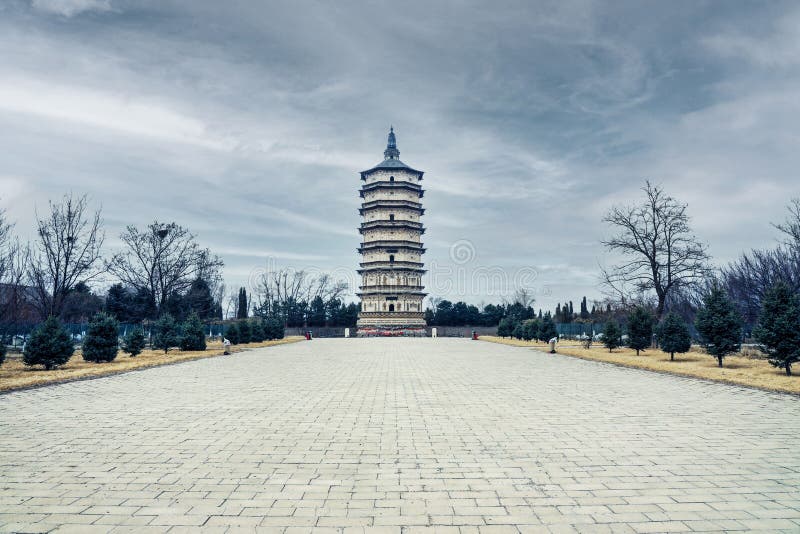
An Essential Guide to Visiting Wanbu_Huayanjing_Pagoda_White_Pagoda
Nestled in the serene outskirts of Hohhot, the Wanbu Huayanjing Pagoda, commonly known as the White Pagoda, stands as a testament to the architectural grandeur and rich cultural tapestry of China’s Liao Dynasty. With its strikingly white exterior and elegant octagonal shape, this ancient structure rises majestically to a height of 55.6 meters, inviting travelers to explore its storied past.
Constructed during the reign of Liao Shengzong in the early 11th century, the pagoda is not just an eye-catching landmark but a repository of history, featuring intricate brick carvings and inscriptions in multiple languages—including Chinese, Khitan, Manchu, and Mongolian—that recount the diverse narratives of those who have visited over the centuries. A visit to the White Pagoda offers a unique glimpse into the region’s Buddhist heritage, along with breathtaking panoramic views from its summit, where the sprawling landscapes stretch as far as the eye can see.
As you wander through this ancient marvel, you will not only traverse the steps of countless pilgrims before you but also immerse yourself in a cultural experience that echoes the whispers of history. Whether you are an avid historian, an architecture enthusiast, or simply seeking a peaceful retreat, the Wanbu Huayanjing Pagoda promises to captivate your senses and enrich your journey through Inner Mongolia.
In This Guide
- An Essential Guide to Visiting Wanbu_Huayanjing_Pagoda_White_Pagoda
- The Rich History and Legends of Wanbu_Huayanjing_Pagoda_White_Pagoda
- Main Highlights: What You Absolutely Can’t Miss
- Planning Your Visit: A Practical Guide
- Tickets: Prices, Booking, and Tips
- How to Get There: A Complete Transportation Guide
- Local Cuisine and Accommodation Nearby
- Frequently Asked Questions
- Final Thoughts on Your Trip
The Rich History and Legends of Wanbu_Huayanjing_Pagoda_White_Pagoda
Nestled in the serene outskirts of Hohhot, the Wanbu Huayanjing Pagoda, commonly known as the White Pagoda, stands as a timeless testament to the region’s rich cultural and architectural heritage. Constructed during the reign of the Liao Dynasty’s Shengzong (983-1031 AD), this magnificent structure has witnessed the ebb and flow of history for over a millennium, enduring both the ravages of time and natural elements.
At approximately 55.6 meters tall, the White Pagoda is an impressive octagonal tower with seven tiers, built using a harmonious blend of brick and wood in a traditional pavilion style. Its pure white exterior, which gives it its nickname, is adorned with intricate brick carvings that tell the tales of ancient Buddhist deities and protectors, enriching the pagoda’s spiritual ambiance. Among these sculptures are lifelike representations of bodhisattvas and warriors, each intricately detailed, showcasing the high level of craftsmanship from the time of its creation.
The pagoda’s historical significance transcends mere aesthetics; it serves as a vital repository of cultural inscriptions from various dynasties including the Jin, Yuan, Ming, and Qing. Visitors can marvel at the myriad of inscriptions etched in multiple languages, such as Chinese, Khitan, Jurchen, Mongolian, ancient Syrian, and Persian. These inscriptions not only chronicle the experiences of travelers from different eras but also provide invaluable insights into the socio-political landscape of the region, making the White Pagoda an essential site for historians and scholars alike.
In its early years, the White Pagoda was not just a religious monument but also a cultural hub. It was originally part of the Fenzhou city, a bustling center of trade and culture during its time. The pagoda has survived countless challenges, including earthquakes and severe weather, yet it remains a vital piece of Hohhot’s identity, having been designated as a national key cultural relic protection unit.
One of the most notable renovations occurred during the Jin Dynasty in 1162, which not only restored the pagoda but also emphasized its prominence as a symbol of the region. The Qing Dynasty further immortalized the structure by including it in the “Eight Scenic Spots of Hohhot,” a designation that highlights its beauty and cultural importance.
Today, the Wanbu Huayanjing Pagoda is more than just a historical structure; it is a serene retreat for visitors who wish to connect with the past. The site also houses the Fenzhou Ancient City Museum, where travelers can delve deeper into the history and significance of the pagoda and its surroundings. Admission to the complex is free, inviting all to explore this hidden gem without the barriers of cost.
As you ascend the spiral staircase within the pagoda, you are rewarded with breathtaking panoramic views that stretch across the vast landscape, a reminder of the enduring beauty of this ancient site. Whether you are an avid historian, a photography enthusiast, or simply in search of a peaceful escape, the White Pagoda offers an unparalleled glimpse into the heart of Inner Mongolia’s rich cultural tapestry.

Wanbu_Huayanjing_Pagoda_White_Pagoda.
Main Highlights: What You Absolutely Can’t Miss
When visiting the Wanbu Huayanjing Pagoda, also known as the White Pagoda, you will encounter an impressive blend of history, architecture, and spirituality that is simply unmissable. Here are the main highlights that should be on your itinerary:
Architectural Marvel
The White Pagoda, standing at approximately 55.6 meters, is an exquisite example of ancient Chinese architecture. Built during the Liao Dynasty (983-1031 AD), this octagonal, seven-tiered structure boasts a unique brick-wood hybrid construction. As you approach, take a moment to admire the striking white exterior that gives it its popular name, making it a standout feature against the vast landscape.
Intricate Brick Carvings
One of the pagoda’s most captivating features is its stunning brick carvings. The first two layers are adorned with intricate reliefs depicting Bodhisattvas, celestial kings, and legendary warriors, all showcasing exceptional craftsmanship. Don’t miss the two dragons entwined around the corner pillars, a testament to the artistry that has survived through centuries.
Historic Inscriptions
As you ascend the spiral staircase within the pagoda, you’ll find walls lined with inscriptions from travelers throughout history. These writings, in various languages including Chinese, Khitan, and Mongolian, provide invaluable insights into the cultural exchanges and social conditions of the past. It’s a fascinating glimpse into the diverse tapestry of human experience over the centuries.
Panoramic Views
Climbing to the top of the pagoda rewards you with breathtaking panoramic views of the surrounding mountains and plains. On a clear day, the scenery is nothing short of majestic, offering a perfect backdrop for photos. Be sure to take your time here to relish the tranquility and beauty of the area.
The Surrounding Museum
Adjacent to the White Pagoda is the Fengzhou Ancient City Museum, which is free to enter. Here, you can explore various exhibits that delve into the rich history of the region. It’s an excellent way to gain context about the pagoda and the cultural heritage of the area.
Ideal Visiting Times
For the best experience, consider visiting in the late afternoon when the sunlight casts a golden hue over the pagoda, enhancing its ethereal beauty. This is also the prime time for photography, as the light creates stunning visual effects against the white structure.
Tips for Visitors
- Timing: Allocate 1-2 hours for your visit to fully appreciate both the pagoda and the museum.
- Photography: Capture the best angles by maintaining a distance. The small mounds around the pagoda provide excellent vantage points for photos.
- Respect: As the White Pagoda is a protected cultural site, it’s essential to follow all guidelines and treat the area with respect.
Getting There
The pagoda is located about 18 kilometers east of Hohhot, making it accessible via public transportation. Bus 113 conveniently drops you near the site, but be prepared for limited service intervals.
Visiting the Wanbu Huayanjing Pagoda is not just about sightseeing; it’s a journey through time, culture, and spirituality that every traveler should experience when in Hohhot.
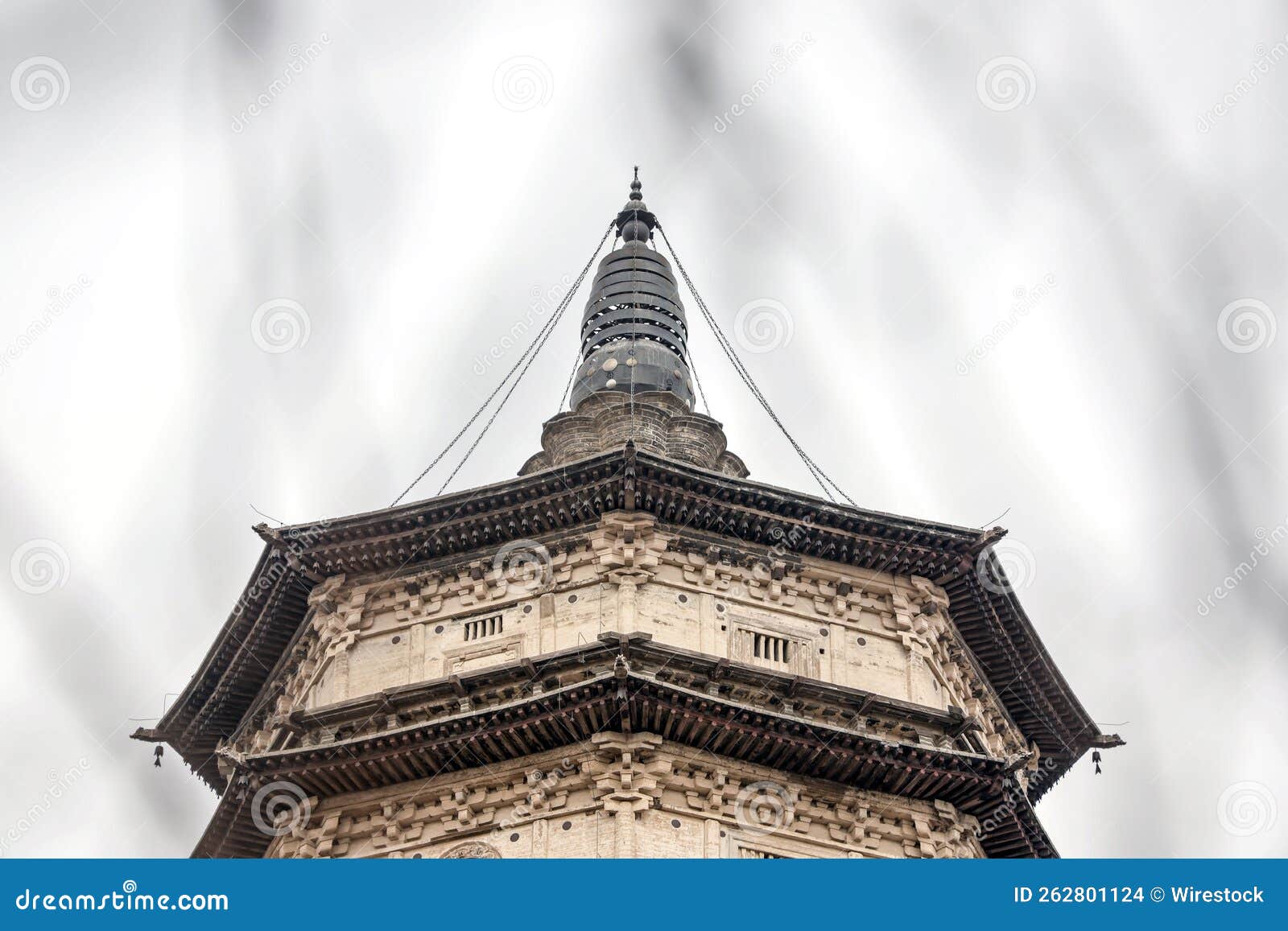
Wanbu_Huayanjing_Pagoda_White_Pagoda.
Planning Your Visit: A Practical Guide
Visiting the Wanbu Huayanjing Pagoda, also known as the White Pagoda, is a unique opportunity to explore a significant piece of Chinese history nestled in the scenic landscapes of Inner Mongolia. This comprehensive guide will help you plan your visit to this stunning architectural marvel.
Getting There
The White Pagoda is located approximately 18 kilometers east of Hohhot in Bai Ta Village. It’s easily accessible via public transportation:
- Public Bus: Take Bus No. 113, which goes directly to the White Pagoda stop. Buses run approximately every 30-60 minutes, and the fare is around 5 RMB. The journey takes about 40 minutes.
- Car: If you prefer driving, simply input “Wanbu Huayanjing Pagoda” into your GPS for easy navigation. There are ample parking spaces available nearby.
Admission Details
One of the best parts about visiting the White Pagoda is that admission is free! Visitors need just to register with a valid ID at the entrance. This makes it a budget-friendly destination for travelers.
Recommended Duration
Plan to spend 1 to 2 hours exploring the White Pagoda. This timeframe allows you to appreciate its architectural beauty, learn about its historical significance, and take in the stunning views from the top.
What to Expect
The White Pagoda is an impressive structure standing at 55.6 meters tall, featuring a unique octagonal, seven-tiered design made from brick and wood. Here are some features to look out for:
- Stunning Sculptures: The first two levels are adorned with exquisite brick carvings of Bodhisattvas, kings, and warrior figures. Although some sculptures have weathered over time, their artistry remains breathtaking.
- Historical Inscriptions: Inside the pagoda, you’ll find numerous inscriptions in various languages, including Chinese, Khitan, Jurchen, and Mongolian. These inscriptions provide valuable insights into the region’s cultural history.
- Magnificent Views: Climbing the spiral staircase to the top rewards you with panoramic views of the surrounding landscapes, making the climb worthwhile.
Tips for Your Visit
-
Best Time to Visit: The ideal time for photography is between 10 AM and 12 PM or 3 PM and 5 PM when the lighting is soft, creating perfect conditions for stunning photos.
-
Climbing Protocol: When walking around the pagoda, it is recommended to do so in a clockwise direction, ideally in multiples of three, as per local customs.
-
Photography: For the best shots, maintain a distance from the pagoda while capturing its grandeur. The small mounds of earth around the pagoda serve as excellent vantage points.
-
Visit Nearby Attractions: If time permits, explore the nearby ruins of the old Bai Ta train station. Although it requires a 2 km walk from the nearest bus stop, it’s a worthwhile addition to your itinerary.
-
Pack Light: There are no public lockers available at the site, but you can communicate with staff for free storage options if needed.
-
Environmental Respect: Remember to maintain the cleanliness of the area and refrain from touching or defacing the historical structures.
Opening Hours
- April 25 to October 7: 9:30 AM – 5:00 PM
- October 8 to April 24: 10:00 AM – 4:30 PM
- Closed on Mondays (except national holidays)
Nearby Amenities
After exploring the pagoda, you might want to grab a bite. Some nearby dining options include:
– Domeqi Cake Shop: A local favorite for snacks and desserts.
– Weiji Chicken Roll: Known for its delicious wraps and quick meals.
Final Note
The Wanbu Huayanjing Pagoda is not just a site of historical significance; it’s an embodiment of the rich cultural tapestry of Inner Mongolia. Whether you’re a history enthusiast, a photography lover, or simply looking to experience a slice of Chinese heritage, a visit to the White Pagoda promises to be a memorable adventure. Embrace the serenity and beauty that this ancient structure offers, and enjoy your journey through time!
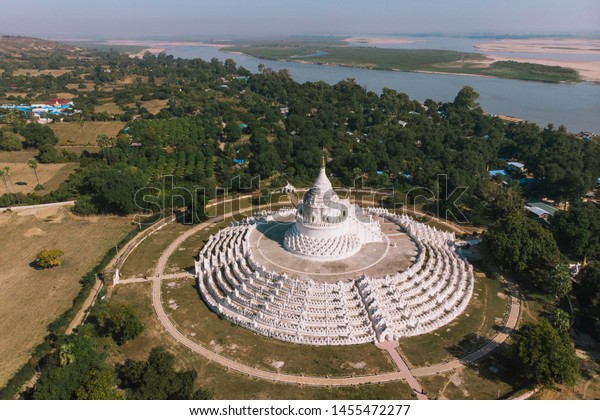
Wanbu_Huayanjing_Pagoda_White_Pagoda.
Tickets: Prices, Booking, and Tips
Visiting the Wanbu Huayanjing Pagoda, commonly known as the White Pagoda, is an enriching experience that combines history, architecture, and spirituality. Here’s everything you need to know about tickets, prices, booking, and some handy tips for making the most of your visit.
Ticket Information
One of the most appealing aspects of the White Pagoda is that admission is completely free! To enter, simply present your identification at the entrance for registration. This makes it an incredible value for international travelers looking to explore cultural heritage without breaking the bank.
Booking
Since entry is free, there is no need for advance bookings or reservations. However, it’s wise to check the opening hours before your visit to ensure you plan accordingly. The pagoda operates under the following schedule:
- April 25 to October 7: 9:30 AM – 5:00 PM
- October 8 to April 24: 10:00 AM – 4:30 PM
- Closed on Mondays (except for national holidays)
Transportation Tips
Getting to the White Pagoda is convenient. You can take Bus 113, which operates about every 30 to 60 minutes. Just hop off at the “White Pagoda Station” and walk a short distance to reach the site. The fare is affordable, costing around 5 RMB (approximately $0.75 USD), and the journey takes around 40 minutes.
If you’re considering driving, simply enter “Wanbu Huayanjing Pagoda” into your GPS. The area provides ample parking space, making it easy for those who prefer the flexibility of having their own vehicle.
Visiting Tips
-
Best Time to Visit: For the most picturesque views, consider visiting during late afternoon when the light is perfect for photography. The sunset adds a magical quality to the pagoda, especially in winter when migrating birds can often be seen flying nearby.
-
Climbing the Pagoda: If you plan on climbing to the top, be prepared for narrow spiral staircases. It’s recommended to take your time and avoid rushing.
-
Photography: For the best shots of the pagoda, maintain a distance to capture its grandeur. Use zoom features on your phone for stunning close-ups of intricate details.
-
Cultural Practices: When circling the pagoda, it’s customary to do so in a clockwise direction, preferably in multiples of three, as a sign of respect.
-
Souvenir Stamps: Don’t forget to pick up one of the unique stamps available at the registration desk upon entry—perfect for commemorating your visit!
-
Nearby Attractions: If time allows, explore the nearby ruins of the old train station and the Fengzhou Ancient City Museum, which are both part of the area’s rich history.
In summary, the Wanbu Huayanjing Pagoda offers a unique glimpse into China’s past, with no entry fee to explore this magnificent structure. Whether you’re a history buff, an architecture enthusiast, or just looking for a serene spot to reflect, this site is sure to leave a lasting impression. Happy travels!
How to Get There: A Complete Transportation Guide
Reaching the stunning Wanbu Huayanjing Pagoda, also known as the White Pagoda, is a journey that promises not only breathtaking sights but also a glimpse into the rich history of Inner Mongolia. Situated approximately 18 kilometers east of Hohhot in Bai Ta Village, this ancient structure stands as a testament to the architectural brilliance of the Liao Dynasty. Here’s everything you need to know about getting there.
By Public Transportation
Bus Services:
The most straightforward way to reach the White Pagoda is via the local bus system. The 113 bus offers direct service to the pagoda. Here are the details:
– Departure Point: Hohhot city center
– Frequency: Approximately every 30 to 60 minutes
– Cost: 5 RMB (around $0.75)
– Duration: About 40 minutes
Be sure to check the bus schedule, as the frequency can vary, especially outside of peak hours.
By Taxi or Ride-Hailing Services
For those who prefer a more direct and comfortable route, taking a taxi or using a ride-hailing service like Didi is a great option. Taxis in Hohhot are reasonably priced, and the ride to the pagoda will take about 30 minutes, depending on traffic conditions.
- Estimated Cost: Approximately 30 to 50 RMB ($4.50 – $7.50)
- Navigation Tip: Simply input “Wanbu Huayanjing Pagoda” or “白塔” into your ride-hailing app for easy navigation.
By Private Car
If you’re traveling with a group or prefer the flexibility of your own vehicle, renting a car is an excellent choice. The drive from Hohhot to the pagoda is straightforward:
– Route: Head east on He Xi Road, following signs to Bai Ta Village.
– Parking: There are parking facilities available near the pagoda.
Recommendations for Visitors
- Best Time to Visit: Aim to arrive in the late afternoon for the best lighting conditions for photography, especially during sunset when the pagoda is beautifully illuminated.
- Nearby Attractions: Consider visiting the nearby Fengzhou Ancient City Museum, which provides context for the pagoda’s history and architecture. The museum is free to enter and offers a deeper understanding of the region’s cultural heritage.
Accessibility Considerations
While the pagoda is a stunning site, please note that the site may have limited facilities for those requiring assistance. The structure itself features steep stairs; thus, visitors should be cautious while navigating the interior.
Final Tips
- Bring Your ID: Admission to the site is free, but you will need to register with your identification card.
- Timing Your Visit: The pagoda is open from 9:30 AM to 5:00 PM from April 25 to October 7, and from 10:00 AM to 4:30 PM from October 8 to April 24. It is closed on Mondays.
- Stay Hydrated: Given the outdoor nature of the visit, ensure you carry water, especially during the summer months.
With this transportation guide, your journey to the magnificent Wanbu Huayanjing Pagoda will be smooth and enjoyable. Embrace the adventure, and prepare to be captivated by one of Inner Mongolia’s most iconic landmarks!
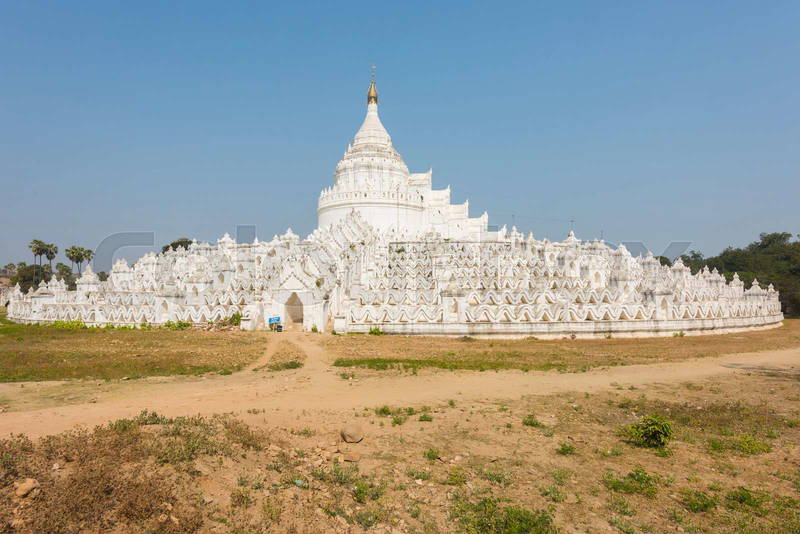
Wanbu_Huayanjing_Pagoda_White_Pagoda.
Local Cuisine and Accommodation Nearby
Nestled in the scenic landscape surrounding the Wanbu Huayanjing Pagoda (White Pagoda), visitors will discover a delightful array of local cuisine and comfortable accommodation options that enhance their travel experience.
Dining Options
-
Weijimao Chicken Roll (魏吉茂鸡肉卷)
Just a short distance from the pagoda, this popular eatery is known for its flavorful chicken rolls, which are made fresh daily. The tender chicken is seasoned with local spices and served in a soft wrap, making it a perfect snack for travelers on the go. Don’t forget to try their signature sauce for an extra kick! -
Domeqi Cake Shop (多美琪蛋糕)
For those with a sweet tooth, Domeqi offers a variety of cakes and pastries that are both visually appealing and delicious. Their freshly baked goods are perfect for a light dessert after exploring the pagoda. Enjoy a cup of local tea with your cake while soaking in the peaceful surroundings. -
Local Noodle Shops
The area is dotted with small noodle shops serving traditional dishes such as hand-pulled noodles (拉面) and lamb noodles, which are a staple in Inner Mongolia. These dishes are hearty and flavorful, providing a satisfying meal before or after your visit to the pagoda.
Accommodation
-
Huayan Hotel (华严酒店)
Located conveniently close to the White Pagoda, Huayan Hotel offers comfortable rooms with modern amenities. Guests can enjoy stunning views of the pagoda from their windows and take advantage of the hotel’s free Wi-Fi and complimentary breakfast. The friendly staff can help arrange local tours and transportation. -
Baita Express Inn (白塔快捷酒店)
This budget-friendly option is ideal for travelers looking for basic yet clean accommodations. The Baita Express Inn is just a short drive from the pagoda and provides easy access to public transportation. The inn offers cozy rooms and a simple breakfast, ensuring a restful stay. -
Local Guesthouses
For a more immersive experience, consider staying at one of the local guesthouses. These family-run establishments often provide a glimpse into Mongolian culture and hospitality. Guests can enjoy home-cooked meals and personalized service, making their stay even more memorable.
Conclusion
With a blend of delightful dining choices and comfortable accommodations, the area surrounding the Wanbu Huayanjing Pagoda offers everything you need for a fulfilling visit. Whether you’re indulging in local delicacies or resting after a day of exploration, you’ll find that this unique destination has much to offer.
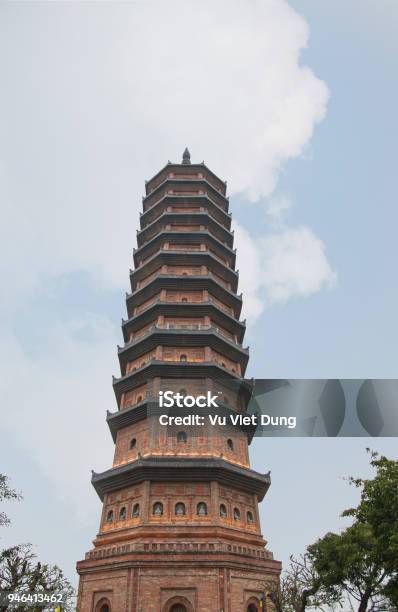
Wanbu_Huayanjing_Pagoda_White_Pagoda.
Frequently Asked Questions
Frequently Asked Questions about Wanbu Huayanjing Pagoda (White Pagoda)
- What is the Wanbu Huayanjing Pagoda?
-
The Wanbu Huayanjing Pagoda, commonly known as the White Pagoda, is an ancient octagonal tower located in Hohhot, Inner Mongolia. Built during the Liao Dynasty (983-1031 AD), it stands 55.6 meters tall and features exquisite brick carvings and a unique mix of brick and wood construction.
-
Where is the White Pagoda located?
-
The pagoda is situated approximately 18 kilometers east of downtown Hohhot, in White Pagoda Village, within the Saihan District. It is easily accessible by public transport and private vehicles.
-
Is there an admission fee to visit the pagoda?
-
No, entrance to the Wanbu Huayanjing Pagoda is free! Visitors only need to register with their identification to gain access.
-
What is the best time to visit the White Pagoda?
-
The ideal visiting time is during the late afternoon, particularly around sunset, when the light creates stunning photo opportunities. For photography enthusiasts, the best light is typically between 10 AM to 12 PM and 3 PM to 5 PM.
-
How can I get to the White Pagoda?
-
You can take Bus No. 113, which goes directly to the “White Pagoda Station.” Buses run infrequently, about every 30-60 minutes. If you prefer driving, you can use GPS navigation to guide you to the site, and parking is available nearby.
-
Can I climb to the top of the pagoda?
-
Unfortunately, the internal staircase that once allowed visitors to access the top of the pagoda is currently closed. However, you can still admire its architectural beauty and the carvings from the ground level.
-
Are there any facilities nearby?
-
Yes, there are dining options nearby, such as the Duo Mei Qi Cake Shop and Wei Ji Mao Chicken Roll, along with the Fengzhou Ancient City Museum, which offers a fascinating insight into the history of the region.
-
What should I keep in mind while visiting?
- Be respectful of the pagoda as it is a national cultural heritage site. Avoid touching the sculptures and keep the area clean. Additionally, note that the pagoda is open from April 25 to October 7, from 9:30 AM to 5:00 PM, and from October 8 to April 24, from 10:00 AM to 4:30 PM. The site is closed on Mondays, except during public holidays.
Final Thoughts on Your Trip
As you reflect on your visit to the Wanbu Huayanjing Pagoda, also known as the White Pagoda, let the echoes of its storied past resonate within you. This remarkable structure, standing tall since the Liao Dynasty, is not just a testament to ancient architecture but a gateway to rich cultural narratives woven through centuries. Each intricate brick carving tells a tale of devotion, artistry, and the passage of time, inviting you to pause and ponder the lives that have come before.
Standing at the summit, the panoramic views of the vast plains below serve as a reminder of the enduring spirit of this sacred site. Whether you marveled at the delicate sculptures or wandered through the nearby museum, you’ve experienced a unique blend of history and spirituality that is seldom found in more commercialized attractions.
As you prepare to leave, take with you not just photographs, but also a sense of connection to the rich tapestry of cultures that converge at this iconic landmark. The White Pagoda is more than just a destination; it’s an experience that lingers in the heart and soul. Share your stories, inspire others to discover this hidden gem, and carry the serenity of the pagoda with you as you continue your journey across this beautiful land. Safe travels!